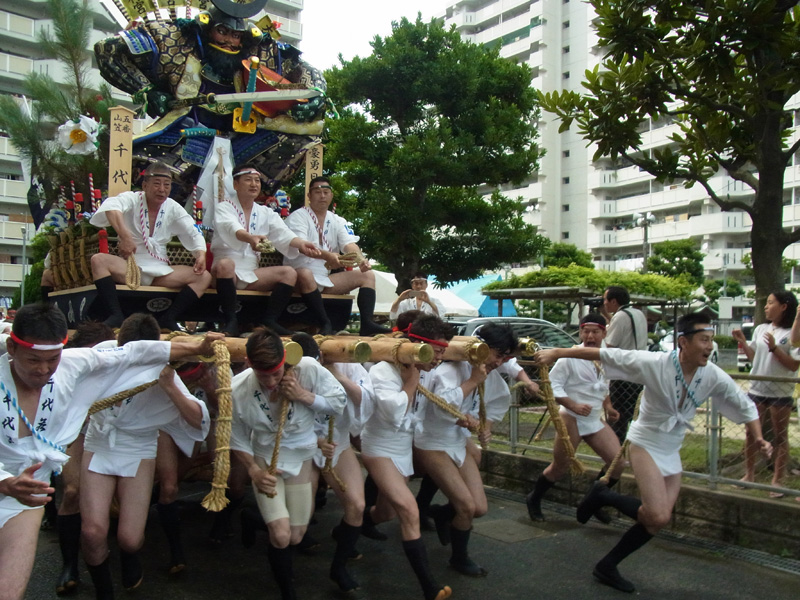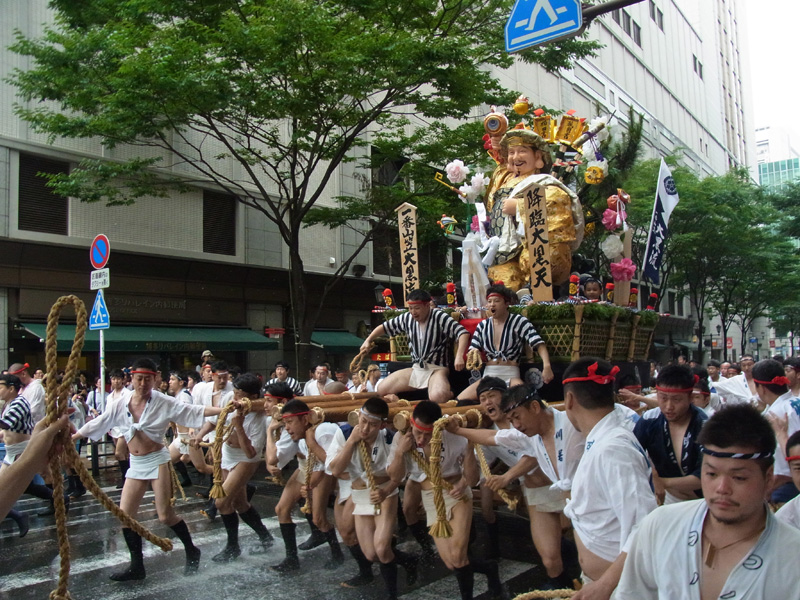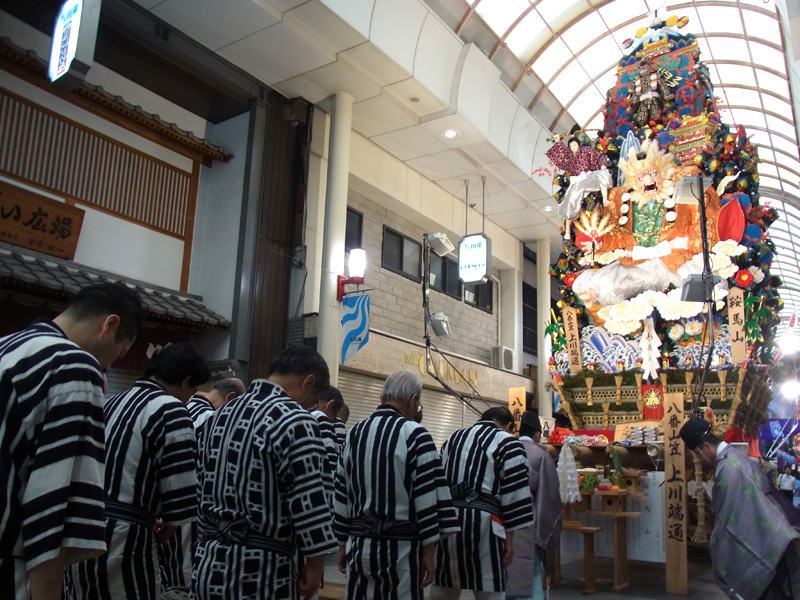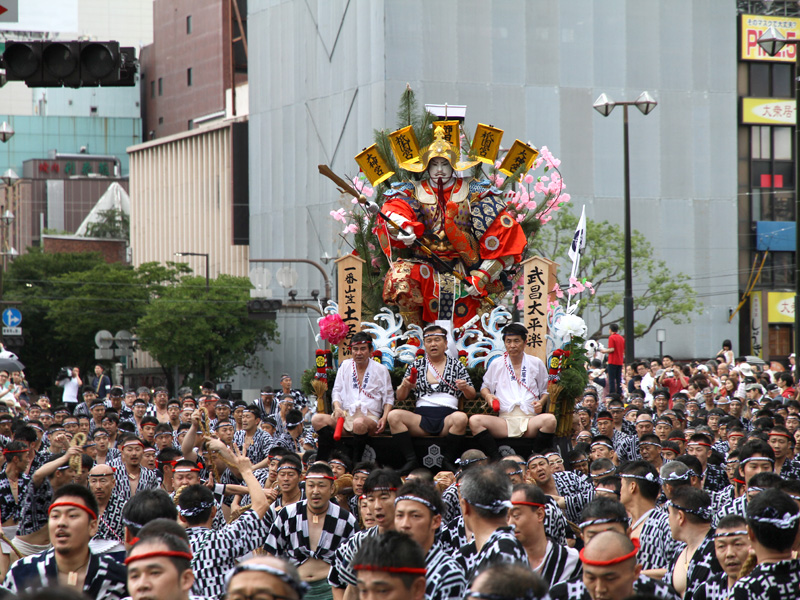The forerunners (Sakibashiri) and children carrying Maneki-boards (Maneki-ita) and Maneki-flags (Maneki-bata) are the indicators of an approaching group, so if you see them, please stand aside and listen to the supervisors.


Yamakasa Schedule
An overview of the main events
The Nagaregaki (10th of July)

The quiet phase is over and the Kakiyama are run through the town!
The transition to the dynamic phase has begun, after the 10th the Kakiyama (舁き山: carrying mountain = parade handbarrow) are carried and often raced throughout Hakata.
The competition of strength around the Kakiyama.




The long awaited first round of the handbarrow carrying begins. During the Nagaregaki (流舁き) each district (流: Nagare) of Hakata carries their handbarrow all around their own district.
Since this is the first day of carring, the carriers still have lots of energy and the running speed, called Yama-ashi (山足) is actually quite fast.


It takes over 30 men to carry the Kakiyama. During the run they can switch with others, who are running along to regain their strength. A lot of younger and older men who can’t carry the Kakiyama also run along side. And those who can’t run along often wait aside the route the men are going to take.
It should be noted that the group often has to huddle quite close together in the small roads of Hakata and that they often have the districts traffic supervisors, identifiable by their green sash (See Here), clear the roads for them in advance. Due to the narrow roads of the less central parts of Hakata dangerous collisions can occur with the running mob. We therefore advise to always follow the instructions of the traffic supervisors and not to come to close to the running group.

The essential point of the festival and the reason a lot of tourists visit it is the water!

During the run of the Yamakasa, often the runners will be sprinkled with large amounts of water, that is called Kioimizu (勢い水: vitalisation water). While in the origin story of the Yamakasa festival water is sprinkled from the carried handbarrow onto the city, here water is sprinkled onto the runners in order to cool them off, since it is a very hot day and otherwise they could overheat fast. Because of this the runners are greeted with a nonstop shower of water everywhere they go.
Since the water flies everywhere during the festival, the possibility of getting wet must be taken into account. Wearing western style clothes and keeping mobile telephones as well as digital cameras in plastic bags or storing them waterproof is advised. Please be careful when shooting photos not to get the camera wet.
By the way, because the water needs to be brought to the places, the runners run by, a good place to wait for a group of runners is where there is a water tank but the asphalt is not yet wet.














